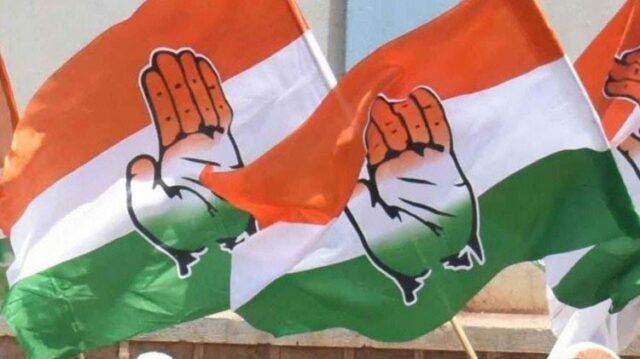Constitution Day: Indian Constitution has been changed 105 times so far, know the last 5 amendments of the Constitution

Various amendments have been made in the constitution of our country from time to time as and when required. A total of 104 amendments have been done since the constitution came into force till date. The constitution was passed in our country on 26 November 1949 and was formally implemented on 26 January 1950. That is why there is a tradition of celebrating 26 November as Constitution Day of India. Let us tell you that till now 127 Constitutional Amendment Bills have been brought in the Parliament, out of which 105 Constitutional Amendment Bills have been passed. The Constitution of India is called the longest written constitution in the world. No republican country in the world has a longer written constitution than this. It took 2 years, 11 months, 18 days to prepare the constitution completely. After its implementation, attempts were made to amend it several times for matters ranging from reorganization of states on the basis of language to giving reservation to poor upper castes. Out of 126, only 105 amendments could be passed. The rest were cancelled.
The Constitution of India is neither rigid nor flexible. The Parliament has the right to amend the Indian Constitution under Article 368 under the ‘Basic Structure of the Constitution’. This is done in three ways…
Simple majority
- By special majority
- By a special majority after getting the support of half the states
- First amendment of the constitution
It was introduced in the Parliament by the then Indian Prime Minister Jawaharlal Nehru on 10 May 1951, which was passed in the Parliament on 18 June 1951. Under the first amendment of the constitution, changes were made in the fundamental rights and initiative was taken to give the right to freedom of speech and expression to the common man.
Reorganization of states on linguistic basis
The Seventh Amendment to the Indian Constitution was implemented in 1956. By this amendment, states were reorganized on linguistic basis, in which the classification of states in the next three categories was abolished and they were divided into states and union territories. Along with this, the seats in the Central and State Legislatures were rearranged accordingly.
Defection law
In 1985, through the 52nd Constitutional Amendment, the Tenth Schedule was added to the Constitution, which is called the Anti-Defection Law. Through that a provision was made to end the membership of defectors and the rules of defections were made stricter.
Citizenship Amendment Bill 2019
In the year 2019, the Parliament passed the Citizenship (Amendment) Bill 2019, which became an Act after getting the assent of the President. The Citizenship (Amendment) Act, 2019 was brought to amend the Citizenship Act, 1955. The Citizenship Act, 1955 provides various grounds for acquiring citizenship. This was called a major amendment.
The Supreme Court gave a blow to the 99th amendment
The Supreme Court had given a blow to the government by declaring the 99th Constitutional Amendment regarding the formation of the National Judicial Commission as unconstitutional. The Supreme Court on 16 October 2015 struck down the NJAC Act, 2014, which replaced the 22-year-old collegium system of judges appointing judges. A five-judge constitution bench had taken the decision by a four-to-one majority and rejected the amendment made by the government.
100th Constitutional Amendment Act 2015
The amendment gave effect to the acquisition of territories by India and the transfer of certain territories to Bangladesh in pursuance of the Land Boundary Agreement and its protocols between the governments of India and Bangladesh.
101st Constitutional Amendment Act 2016
New articles 246-A, 269-A and 279-A were inserted for the nomination of Goods and Services Tax (GST), which made changes to the Seventh Schedule and the scope of inter-state trade and commerce. Initiative was taken to make 101st amendment in the Indian Constitution to implement Goods and Services Tax in the country. Its purpose was to create a common market system by removing financial barriers between the states. It is a single national uniform tax system levied on goods and services across India.
102nd Constitutional Amendment Act, 2018
Through this, the National Commission for Backward Classes (NCBC) was established as a constitutional body under Article 338-B of the Constitution. It was given the responsibility of considering the inclusion and exclusion of communities in the list of backward communities for reservation in jobs.
103rd Constitutional Amendment Act 2019
The 124th Constitutional Amendment Bill was passed by the Parliament to give 10 percent reservation to the economically weaker sections of the general category. A total of 165 votes were cast in support of this bill in the Rajya Sabha, while 7 people also opposed it. In the Lok Sabha, 323 votes were cast in its support, while only 3 votes were cast against it. In this way, the rule of 10 percent reservation for people belonging to economically weaker sections has been made. This added new provisions under Article 15(6) and Article 16(6) to allow the government to ensure the advancement of “economically weaker sections”.
104th Constitutional Amendment Act 2020
The 126th Constitutional Amendment Bill was introduced in Parliament on 2 December 2019. Which was accepted while making the 105th amendment of the Indian Constitution. Under this, Article 334 of the Indian Constitution was amended and the period of reservation for Scheduled Castes and Scheduled Tribes in Lok Sabha and Legislative Assemblies was further extended for 10 years. Their reservation limit was ending on 25 January 2020. Through this, under Article 331, 2 reserved seats in Parliament for Anglo-Indian communities and 1 seat for Legislative Assembly were not expanded.
105th Amendment Act 2021
The 105th amendment was introduced on the basis of the Supreme Court judgment in the Maratha reservation case, which stated that a list of Socially and Economically Backward Classes (SEBCs) should be prepared by the Central Government under the Central List. This amendment was done to restore the power of states and union territories to identify socially and economically backward communities (SEBCs) and maintain a separate list of backward communities other than the central list. Articles 366(26C) and 338B have been inserted in relation to the above.







